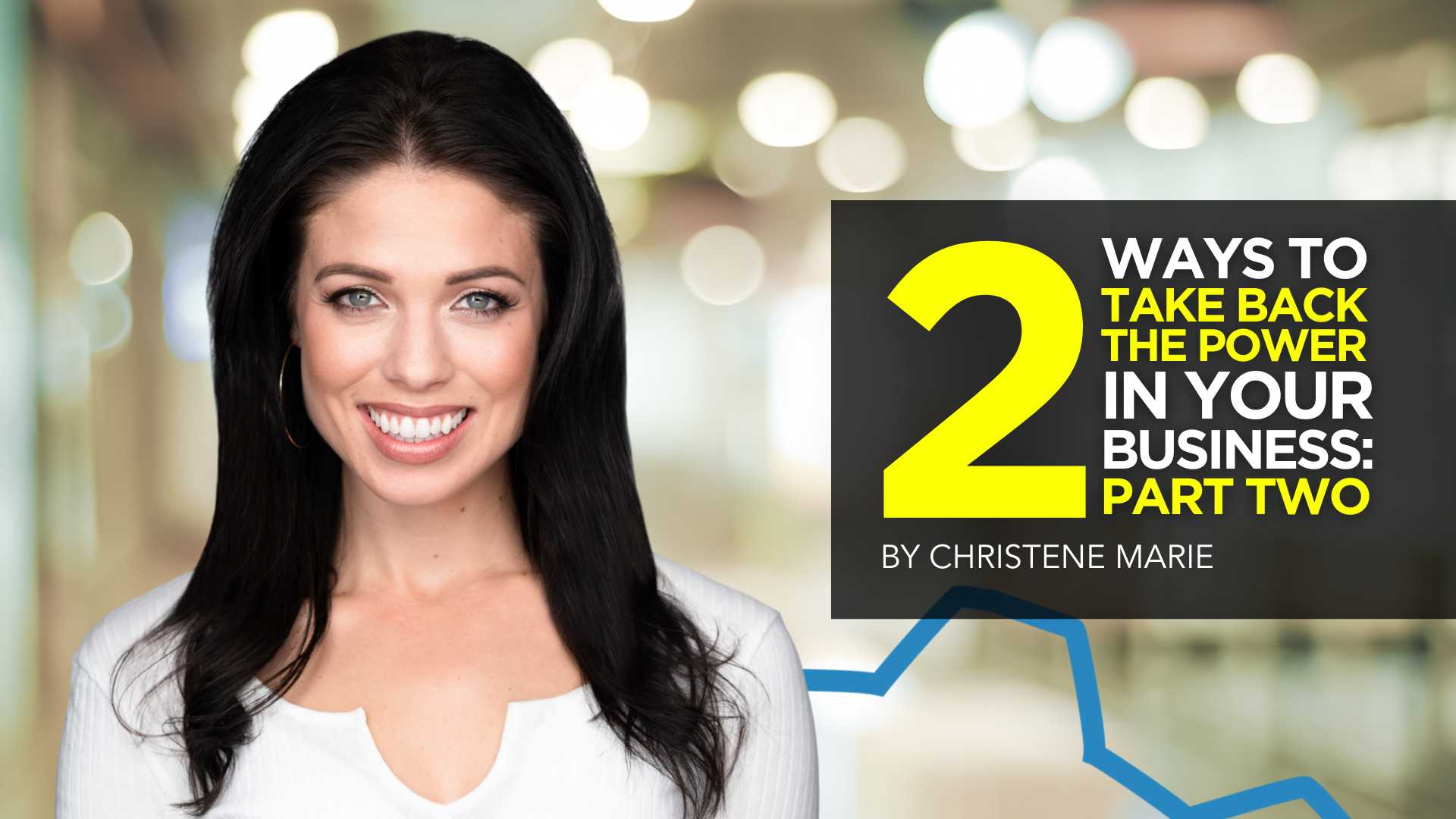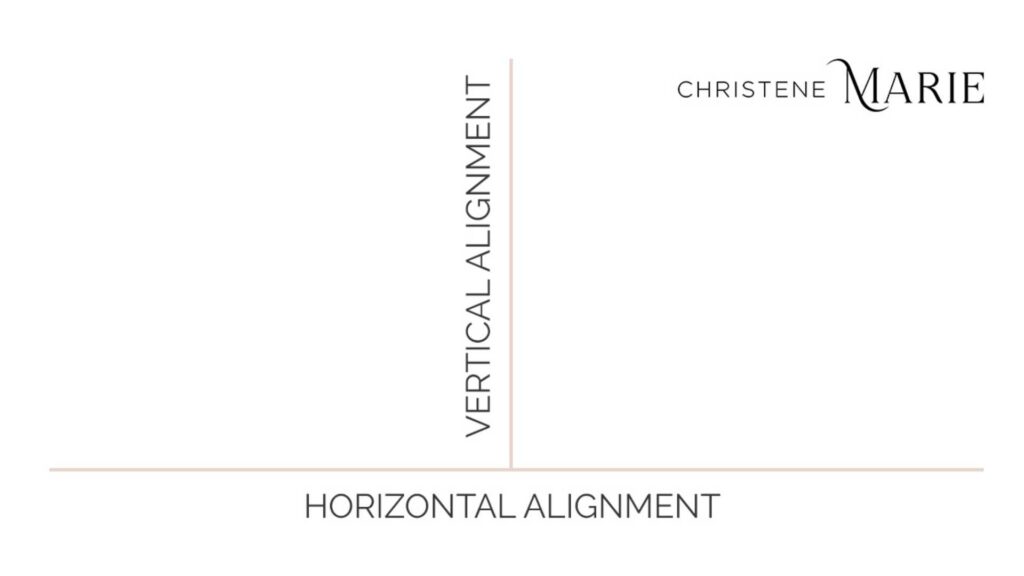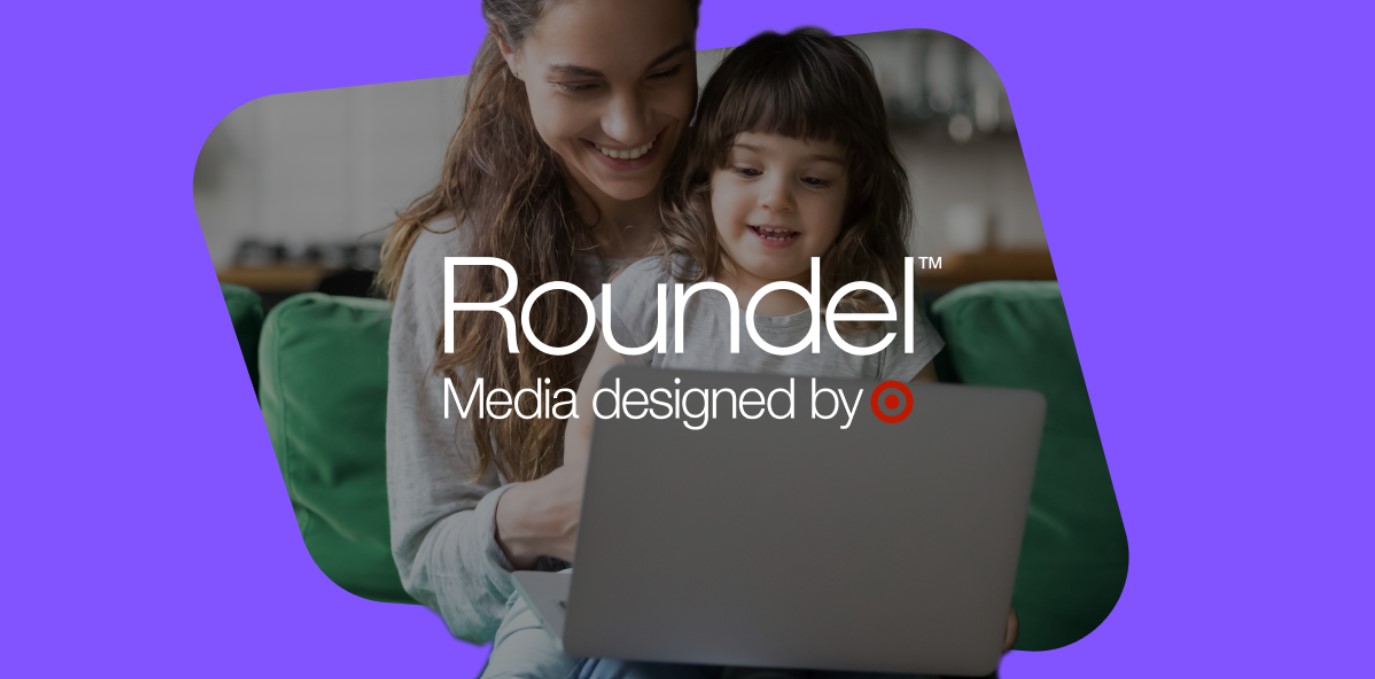MARKETING
11 Conversion Copywriting Tips that Grew Our Revenue by 240%, According to Lately’s CEO

As marketers, we write copy daily: For landing pages, social media posts, email newsletters, you name it.
And this content isn’t just supposed to sound pretty — it’s also supposed to be powerful enough to convert visitors into sales. In fact, as of 2022, over 60% of marketers measure the success of their content through sales. That’s no small feat.
If you’re stuck in a writing rut or unsure how to use conversion copywriting to increase sales, you’re in luck. Here, I sat down with Lately’s CEO, Kate Bradley Chernis, to discuss the 11 tips that enabled her and her team to grow monthly recurring revenue by 240%.
But first — what is conversion copywriting, anyway?
What is conversion copywriting?
Simply put, conversion copywriting is copy with the ultimate goal of converting readers into buyers.
Conversion copywriting uses engaging and persuasive language to motivate readers to take a specific action.
Typically, the goal with conversion copywriting is to encourage readers to purchase a product or service. However, conversion copy can be used at all stages of the buyer’s journey, so conversion copywriting might be leveraged to inform buyers’ of their pain points, encourage them to sign-up for newsletters or future offers, or simply increase brand awareness.
Conversion copywriting ultimately falls under the broader topic of website conversion rate optimization (CRO) — or leveraging your website to effectively convert users across your homepage, blog, pricing page, and more.
There’s a difference between conversion copywriting and SEO copywriting. As Chernis puts it, “As a startup founder, I’m in the business of turning customers into evangelists — because evangelists work for you for free. SEO is never going to get me there. Besides, SEO is reliant on you, the search engine user, to take all the action. But with conversion copywriting, I’m driving the conversation and have complete control over where it goes.”
SEO and conversion copywriting can coincide, but the biggest distinction is the goal you’ll have in-mind when creating the content: SEO copy is copy written with the intent of getting on page one of Google. Conversion copy, on the other hand, is written with the intent of keeping readers’ on-page once they find your content.
Consider, for instance, the following LinkedIn post by Chernis:
The piece uses engaging and active language to encourage viewers to join one of Lately’s live video Office Hours. While the content might not pass an ‘SEO-optimized’ test, it doesn’t need to — on social media, it’s more about standing out from the crowd through authentic, creative content.
Next, let’s dive into some of Chernis’ favorite copywriting tips, followed by a few impressive examples of conversion copywriting for inspiration.
11 Conversion Copywriting Tips, According to Lately’s CEO
1. Write like a boss.
The first – and perhaps most important — rule Chernis told me is to write with confidence.
She encourages writers to avoid words like need, think, just, probably, maybe, and possibly. Instead, be direct with your writing and ensure you’re getting your point across without superfluous details.
In the examples below, you’ll notice that the brands and influencers we’ve highlighted do a fantastic job of writing with confidence. Consider Uber, for instance — the car-sharing app’s homepage reads: “Get in the driver’s seat and get paid.” It doesn’t read, “Consider getting into the driver’s seat, and you just might get paid.” It’s direct, firm, and assured.
Confidence is key to making you feel empowered to write directly to your readers and encourage them to take action, without offering apologies or excuses.
2. Remove the phrase ‘check out’ from your vocabulary.
I’ll admit: I’m as guilty of this as anyone.
It can be incredibly easy to write ‘Check out’ when you’re encouraging readers to click on a link or read a blog post, but Chernis suggests using stronger action verbs instead to communicate the value of what someone will get by completing your CTA.
For instance, consider the difference between the CTA link “Check out how to optimize your landing pages here” and “Optimize your landing pages here”. The second one is much stronger, and likely more effective.
3. Don’t bury the lede.
As writers, it can be tempting to create beautiful, long-winded introductions full of humor and imagery and metaphors. But as conversion writers, it’s best to get to the point.
Chernis told me, “There’s something about this ‘warming up to the point’ that we all suffer from, an incessant over-intro’ing. Some of it is out of politeness, but ultimately, you want to be direct and get to that point, lickety split.”
4. Use negative calls-to-action instead of positive ones.
Chernis says, “The bad kid in all of us responds to this tactic.”
Consider how you might leverage negative calls-to-action instead of positive ones — for instance, rather than writing, “Remember to follow these rules”, try “Don’t forget to follow these rules.”
Negative calls-to-action work particularly well for B2C brands. As an avid online shopper myself, I can attest: Seeing ‘Don’t miss out on 10% off’ or ‘Don’t forget to purchase’ is often all the encouragement I need to buy.
5. Leverage ‘why’ and ‘because’.
Whenever possible, aim to use ‘why’ and ‘because’ to posit interesting, thought-provoking, open-ended questions and encourage your viewers to keep reading to find out the answer.
As Chernis explains in her copywriting course with HubSpot:
- ‘Why’ wants to be resolved; the reader expects ‘because’.
- ‘Because’ resolves the ‘why’ and triggers reason, which is an ingrained cue for trust — key for compelling CTAs.
- ‘Because’ at the start of the sentence creates pause.
- ‘Why?’ gets the bonus visual of a question mark.

Consider the HubSpot blog post title, ‘Why your brand needs a strong visual identity’ — for some, this unresolved question will be enough to get them to click.
6. Use the royal we/you.
As Chernis told me, using ‘I’ too often can signify selfishness in a brand. By contrast, using ‘we’ and ‘our’ implies inclusivity and trust, and ‘you’ signifies empathy.
Take a look at the difference between “In this post, I am going to demonstrate five examples of copywriting” versus “In this post, let’s explore five examples of copywriting” or “In this post, we’ll explore five examples of copywriting.”
Feel the difference?
7. Read what you write out loud.
Oftentimes, one of the easiest ways to catch awkward or cumbersome writing is by reading it out loud. Reading your content out loud can help ensure you sound authentic, natural, and human.
Additionally, Chernis encourages writers to seek out different ways to say the same thing by leveraging synonyms. She says, “How can you say the same thing differently and do it in a way that cuts through the noise? We all get lazy, but as conversation copywriters, this is our challenge. Find a more interesting way. Open the thesaurus. And don’t just pick any other word; it has to be the right word.”
8. Write with your eyeballs.
When writing for conversion, consider how your writing looks on the page. Many prospects and visitors will skim through your content, so you want to make that easy for them to do.
Leverage spacing, numbers, exclamation points, question marks, percent signs, emojis, and more to make your content as digestible as possible.
9. Do unto others.
As Chernis puts it, “Having compassion is key. Don’t forget that the person on the other end is a busy, stressed human like you. Take the time to ensure that what you want to communicate will be understood as you intend it.”
Reading out loud is one effective strategy to ensuring your writing conveys empathy. Additionally, put yourself in the reader’s shoes often and ask yourself, ‘Would I click this link?’ ‘Would I find this helpful?’ ‘Would I enjoy this content?’
If you’re not passionate about it, your readers won’t be, either.
10. Write with a clear objective.
Conversion copywriting is different from other types of writing in one key way: You want people to take action as a result of your writing.
Which is why Chernis encourages writers to identify what action you want readers to take, and then work backwards from it.
For instance, on social media, Chernis says there are only two objectives: conversion (click) and reach (share). She says to get readers to share your content, you’ll want to appeal to their ego.
As she puts it, “Reshares are all about ego and the person sharing that content — so make those people look smart and interesting, and they’ll share your content; that’s why Gary V. will write ‘Be nice to others’ and everyone shares it … you want to give people something that will make them look cool to others.”
Additionally, Chernis told me the second action — click — always works with How-Tos and tactical content.
11. Dog-food your own marketing.
Finally, Chernis says successful conversion copywriting is about encouraging employees to share your message on social.
She says, “First and foremost, all of my employees are social beasts. That is a must. We also broadcast all of our Lately branded content on each of their personal social channels, because together, we’re stronger. We even have a Slack channel called #sharingiscaring, where every time someone evangelizes us on social, we drop the link in that Slack channel and my entire team is expected to boost it with likes, comments and re-shares. I might even share those links with other Slack groups or with my investors … because I’m an army of one. I rely on the help of other people.”
Chernis adds, “If your employees aren’t following and sharing your message, you’ve got bigger problems. They should be your biggest fans.”
How Lately Achieved 240% Monthly Recurring Revenue Increase from Copywriting Alone
When I spoke with Chernis about her copywriting tips, I was also curious about the results of her conversion copywriting efforts. Does conversion copywriting actually matter all that much to a business’ bottom line?
Turns out, it does. For Lately, conversion copywriting alone led to a 240% increase in monthly recurring revenue, and a 98% sales conversion rate.
Wondering how?
Chernis told me she does one public speaking or guest post every single day. When she’s done, she asks for the file and uploads the file into Lately, which uses artificial intelligence to transcribe the text and pull out one-liners that the AI knows will get the highest re-shares, likes, and comments.
Chernis says, “We don’t do any paid ads, cold calls, or cold emails. Instead, we repurpose all our content to the nth degree. Lately’s AI picks out which bits will get us the most likes, shares, and comments — it knows what our targets want to read, watch, or hear. We then consider those folks ‘warm leads,’ we either qualify or disqualify, and by the time we get them into a demo, we have that 98% sales conversion rate because those leads are hot.”
Ultimately, she told me you can do something similar even without the use of AI. It would just take longer, and you’d have to guess which bits to highlight.
The key is persistency and amplification of each branded message.
 Next, let’s dive into some conversion copywriting examples.
Next, let’s dive into some conversion copywriting examples.
Conversion Copywriting Examples
1. Spotify

Direct, and to the point.
Spotify sure doesn’t bury the lede with this one: “Get 3 months of Premium for free.” You know exactly what they want you to do (sign-up) and you know exactly what you’ll get for completing the request (3-months free). The focus is on you, the reader. This is an actionable, assertive, powerful example of strong copywriting.
2. Black Girl Sunscreen
Start-to-finish, this caption is fun, engaging, and personal. It’s concise, but uses playful phrases (i.e. “no mess, no stress”) to connect with Instagram followers.
Additionally, this is an effective example of ‘writing with your eyeballs’. The caption is easily digestible, using sun emojis as bullet points and an arrow to draw attention to the “Available Now” CTA.
3. Ann Handley

Master-marketer/writer Ann Handley is no stranger to strong conversion copywriting. For instance, her newsletter subscription page is concise and informative: Telling you exactly what you’ll get in her newsletter, and even offering an empathetic “Unsubscribe whenever you want” — signaling Handley took the time to understand any concerns her readers might have when signing up.
4. Uber

I love this conversion path from Uber’s homepage: “Get in the driver’s seat and get paid.” The content doesn’t waste time on any benefits beyond the major one: financial gains as a result of signing up to drive for Uber.
Plus, Uber is smart enough to know why most prospects visit their website — to become a driver, explore Uber Eats, or get a ride – so they don’t waste their readers’ time on superfluous content.
5. Kate Bradley Chernis
Here, Chernis shows an authentic, human side while asking her LinkedIn followers to take action. In particular, notice how Chernis uses negative calls-to-action, i.e. “Learn what not to do” and “Plus all the reasons not doing it are costing you” to effectively convey her message and convince followers to join the live webinar.
Now, it’s your turn.
It’s time for you to take these tips to bring your conversion copy to the next level. The end result is glorious: higher sales, better revenue, more customers, and through-the-roof conversions. It’s up to you to produce the content that will make this happen.
MARKETING
2 Ways to Take Back the Power in Your Business: Part 2


Before we dive into the second way to assume power in your business, let’s revisit Part 1.
Who informs your marketing strategy?
YOU, with your carefully curated strategy informed by data and deep knowledge of your brand and audience? Or any of the 3 Cs below?
- Competitors: Their advertising and digital presence and seemingly never-ending budgets consume the landscape.
- Colleagues: Their tried-and-true proven tactics or lessons learned.
- Customers: Their calls, requests, and ideas.
Considering any of the above is not bad, in fact, it can be very wise! However, listening quickly becomes devastating if it lends to their running our business or marketing department.
It’s time we move from defense to offense, sitting in the driver’s seat rather than allowing any of the 3 Cs to control.
It is one thing to learn from and entirely another to be controlled by.
In Part 1, we explored how knowing what we want is critical to regaining power.
1) Knowing what you want protects the bottom line.
2) Knowing what you want protects you from the 3 Cs.
3) Knowing what you want protects you from running on auto-pilot.
You can read Part 1 here; in the meantime, let’s dive in!
How to Regain Control of Your Business: Knowing Who You Are
Vertical alignment is a favorite concept of mine, coined over the last two years throughout my personal journey of knowing self.
Consider the diagram below.


Vertical alignment is the state of internal being centered with who you are at your core.
Horizontal alignment is the state of external doing engaged with the world around you.
In a state of vertical alignment, your business operates from its core center, predicated on its mission, values, and brand. It is authentic and confident and cuts through the noise because it is entirely unique from every competitor in the market.
From this vertical alignment, your business is positioned for horizontal alignment to fulfill the integrity of its intended services, instituted processes, and promised results.
A strong brand is not only differentiated in the market by its vertical alignment but delivers consistently and reliably in terms of its products, offerings, and services and also in terms of the customer experience by its horizontal alignment.
Let’s examine what knowing who you are looks like in application, as well as some habits to implement with your team to strengthen vertical alignment.
1) Knowing who You are Protects You from Horizontal Voices.
The strength of “Who We Are” predicates the ability to maintain vertical alignment when something threatens your stability. When a colleague proposes a tactic that is not aligned with your values. When the customer comes calling with ideas that will knock you off course as bandwidth is limited or the budget is tight.
I was on a call with a gal from my Mastermind when I mentioned a retreat I am excited to launch in the coming months.
I shared that I was considering its positioning, given its curriculum is rooted in emotional intelligence (EQ) to inform personal brand development. The retreat serves C-Suite, but as EQ is not a common conversation among this audience, I was considering the best positioning.


She advised, “Sell them solely on the business aspects, and then sneak attack with the EQ when they’re at the retreat!”
At first blush, it sounds reasonable. After all, there’s a reason why the phrase, “Sell the people what they want, give them what they need,” is popular.
Horizontal advice and counsel can produce a wealth of knowledge. However, we must always approach the horizontal landscape – the external – powered by vertical alignment – centered internally with the core of who we are.
Upon considering my values of who I am and the vision of what I want for this event, I realized the lack of transparency is not in alignment with my values nor setting the right expectations for the experience.
Sure, maybe I would get more sales; however, my bottom line — what I want — is not just sales. I want transformation on an emotional level. I want C-Suite execs to leave powered from a place of emotional intelligence to decrease decisions made out of alignment with who they are or executing tactics rooted in guilt, not vision.
Ultimately, one of my core values is authenticity, and I must make business decisions accordingly.
2) Knowing who You are Protects You from Reactivity.
Operating from vertical alignment maintains focus on the bottom line and the strategy to achieve it. From this position, you are protected from reacting to the horizontal pressures of the 3 Cs: Competitors, Colleagues, and Customers.
This does not mean you do not adjust tactics or learn.


However, your approach to adjustments is proactive direction, not reactive deviations. To do this, consider the following questions:
First: How does their (any one of the 3 Cs) tactic measure against my proven track record of success?
If your colleague promotes adding newsletters to your strategy, lean in and ask, “Why?”
- What are their outcomes?
- What metrics are they tracking for success?
- What is their bottom line against yours?
- How do newsletters fit into their strategy and stage(s) of the customer journey?
Always consider your historical track record of success first and foremost.
Have you tried newsletters in the past? Is their audience different from yours? Why are newsletters good for them when they did not prove profitable for you?
Operate with your head up and your eyes open.
Maintain focus on your bottom line and ask questions. Revisit your data, and don’t just take their word for it.
2. Am I allocating time in my schedule?
I had coffee with the former CEO of Jiffy Lube, who built the empire that it is today.
He could not emphasize more how critical it is to allocate time for thinking. Just being — not doing — and thinking about your business or department.


Especially for senior leaders or business owners, but even still for junior staff.
The time and space to be fosters creative thinking, new ideas, and energy. Some of my best campaigns are conjured on a walk or in the shower.
Kasim Aslam, founder of the world’s #1 Google Ads agency and a dear friend of mine, is a machine when it comes to hacks and habits. He encouraged me to take an audit of my calendar over the last 30 days to assess how I spend time.
“Create three buckets,” he said. “Organize them by the following:
- Tasks that Generate Revenue
- Tasks that Cost Me Money
- Tasks that Didn’t Earn Anything”
He and I chatted after I completed this exercise, and I added one to the list: Tasks that are Life-Giving.
Friends — if we are running empty, exhausted, or emotionally depleted, our creative and strategic wherewithal will be significantly diminished. We are holistic creatures and, therefore, must nurture our mind, body, soul, and spirit to maintain optimum capacity for impact.


I shared this hack with a friend of mine. Not only did she identify meetings that were costing her money and thus needed to be eliminated, but she also identified that particular meetings could actually turn revenue-generating! She spent a good amount of time each month facilitating introductions; now, she is adding Strategic Partnerships to her suite of services.
ACTION: Analyze your calendar’s last 30-60 days against the list above.
Include what is life-giving!
How are you spending your time? What is the data showing you? Are you on the path to achieving what you want and living in alignment with who you want to be?
Share with your team or business partner for the purpose of accountability, and implement practical changes accordingly.
Finally, remember: If you will not protect your time, no one else will.
3) Knowing who You are Protects You from Lack.
“What are you proud of?” someone asked me last year.
“Nothing!” I reply too quickly. “I know I’m not living up to my potential or operating in the full capacity I could be.”


They looked at me in shock. “You need to read The Gap And The Gain.”
I silently rolled my eyes.
I already knew the premise of the book, or I thought I did. I mused: My vision is so big, and I have so much to accomplish. The thought of solely focusing on “my wins” sounded like an excuse to abdicate personal responsibility.
But I acquiesced.
The premise of this book is to measure one’s self from where they started and the success from that place to where they are today — the gains — rather than from where they hope to get and the seemingly never-ending distance — the gap.
Ultimately, Dr. Benjamin Hardy and Dan Sullivan encourage changing perspectives to assign success, considering the starting point rather than the destination.
The book opens with the following story:
Dan Jensen was an Olympic speed skater, notably the fastest in the world. But in each game spanning a decade, Jansen could not catch a break. “Flukes” — even tragedy with the death of his sister in the early morning of the 1988 Olympics — continued to disrupt the prediction of him being favored as the winner.


The 1994 Olympics were the last of his career. He had one more shot.
Preceding his last Olympics in 1994, Jansen adjusted his mindset. He focused on every single person who invested in him, leading to this moment. He considered just how very lucky he was to even participate in the first place. He thought about his love for the sport itself, all of which led to an overwhelming realization of just how much he had gained throughout his life.
He raced the 1994 Olympic games differently, as his mindset powering every stride was one of confidence and gratitude — predicated on the gains rather than the gap in his life.
This race secured him his first and only gold medal and broke a world record, simultaneously proving one of the most emotional wins in Olympic history.
Friends, knowing who we are on the personal and professional level, can protect us from those voices of shame or guilt that creep in.
PERSONAL ACTION: Create two columns. On one side, create a list of where you were when you started your business or your position at your company. Include skills and networks and even feelings about where you were in life. On the other side, outline where you are today.
Look at how far you’ve come.
COMPANY ACTION: Implement a quarterly meeting to review the past three months. Where did you start? Where are you now?
Celebrate the gain!
Only from this place of gain mindset, can you create goals for the next quarter predicated on where you are today.
Ultimately, my hope for you is that you deliver exceptional and memorable experiences laced with empathy toward the customer (horizontally aligned) yet powered by the authenticity of the brand (vertically aligned).
Aligning vertically maintains our focus on the bottom line and powers horizontal fulfillment.


Want to get certified in Content Marketing?
Leverage the tools and channels to predictably and profitably drive awareness, leads, sales, and referrals—EVERYTHING you need to know to become a true master of digital marketing. Click Here
Granted, there will be strategic times and seasons for adjustment; however, these changes are to be made on the heels of consulting who we are as a brand — not in reaction to the horizontal landscape of what is the latest and greatest in the industry.
In Conclusion…
Taking back control of your business and marketing strategies requires a conscious effort to resist external pressures and realign with what you want and who you are.
Final thoughts as we wrap up:
First, identify the root issue(s).
Consider which of the 3 Cs holds the most power: be it competition, colleagues, or customers.
Second, align vertically.
Vertical alignment facilitates individuality in the market and ensures you — and I — stand out and shine while serving our customers well.
Third, keep the bottom line in view.
Implement a routine that keeps you and your team focused on what matters most, and then create the cascading strategy necessary to accomplish it.
Fourth, maintain your mindsets.
Who You Are includes values for the internal culture. Guide your team in acknowledging the progress made along the way and embracing the gains to operate from a position of strength and confidence.
Fifth, maintain humility.
I cannot emphasize enough the importance of humility and being open to what others are doing. However, horizontal alignment must come after vertical alignment. Otherwise, we will be at the mercy of the whims and fads of everyone around us. Humility allows us to be open to external inputs and vertically aligned at the same time.
Buckle up, friends! It’s time to take back the wheel and drive our businesses forward.
The power lies with you and me.
MARKETING
Roundel Media Studio: What to Expect From Target’s New Self-Service Platform

Roundel™ Media Studio (RMS) has arrived, revolutionizing Target’s advertising game. This self-service platform offers seamless activation, management, and analysis of Target Product Ads, with more solutions on the horizon.
Powered by first-party data from both in-store and online shoppers, RMS provides new audience insights. Coupled with Target’s new loyalty program, Circle 360, advertisers gain precision targeting like never before.
But Target isn’t stopping there. With the rollout of a paid membership program on April 7th, bundling Target Circle, the Circle Card, and Shipt delivery, Target is elevating its media and membership offerings to rival the likes of Walmart and Amazon.
Curious to learn more? We sat down with our experts at Tinuiti to dive deeper into the potential implications of this platform for brands and advertisers alike.
What is Roundel Media Studio?
Roundel™ Media Studio is an integrated platform that consolidates various solutions and tools offered by Roundel™. At its core, it kicks off with our sponsored product ads, known as Target Product Ads by Roundel™.

Image Source: Target.com
This comprehensive platform grants access to the complete range of Target Product Ad placements, featuring tailored slots like “More to Consider” and “Frequently Bought Together” to enhance relevance and personalization.
Moreover, Roundel™ Media Studio operates without any DSP or access fees for Target Product Ads, ensuring that your media budget is optimized to deliver greater efficiency, more clicks, and ultimately, increased sales.
“One of the larger benefits of the transition is that advertisers have an opportunity to capitalize on the additional dollars saved by switching to RMS. Without the 20% fee, brands can re-invest those funds to scale campaigns or optimize budgets, all without having to allocate more funds which drives better results. Roundel™ is putting more control in the hands of advertisers by introducing this new self-service platform.”
– Averie Lynch, Specialist, Strategic Services at Tinuiti
To summarize, key benefits of using RMS include:
- No Access or DSP Fees
- All Target Product Ads Inventory
- 1st Price Auction with Existing Floor Prices
- Closed Loop Sales & Attribution
- Billing via Criteo Insertion Order
- Access Using Partners Online
How to access Roundel Media Studio
According to Target, there’s 3 steps to access Roundel™ Media Studio:
Step 1. Check that you have a Partners Online (POL) account for access. Don’t have one? Reach out to your POL admin to get set up with an account (reach out if you need help locating your organization’s admin).
Step 2. Once you have gotten access to POL, reach out to your Roundel representative who will grant you access to the platform.
Step 3. Users can access Roundel™ Media Studio in 2 ways:
Roundel Media Studio Best Practices
Target offers a variety of tips on how to best leverage their latest offering to drive performance.
Let’s take a look at the latest best practices for strategies such as maximizing efficiency or driving sales revenue.
Recommended bidding tactics for maximizing efficiency:
- Set your line-item optimizer to Revenue for the highest return on ad spend (ROAS) or to Conversions for the lowest Cost per Order (CPO).
- Since the Revenue and Conversions optimizers modulate the CPC you enter to maximize performance, it is useful to set a CPC cap to make sure that your bid will not exceed the maximum amount you wish to pay. The CPC cap should always remain at least 30% above the bid you enter to allow the engine to optimize effectively.
- Set your bids competitively to balance scale and performance (ROAS or CPO) targets.
- Optimize bids with respect to your CPO targets: lower CPCs slightly to increase efficiency, or raise them to increase scale
Recommended bidding tactics for maximizing sales revenue:
- Set the line-item optimizer to Revenue.
- Set bids to maximize scale and competitiveness while staying above KPI thresholds. Since the Revenue optimizer modulates the CPC you enter to maximize performance, it is useful to set a CPC cap to make sure that your bid will not exceed the maximum amount you wish to pay.
- Adjust your bids progressively and preferably at the product level: filter the top products by Spend and then slightly reduce any bids that have a ROAS below your threshold.
- In general, slightly lower CPC to increase efficiency or raise CPC to increase win rates and therefore increase sell-through.
Takeaways & Next Steps
This is just the start for RMS. In the future, Tinuiti will continue its partnership with Roundel to refine features and introduce additional ad types and functionalities.
When exploring any new advertising opportunity, the best results are typically realized when partnering with a performance marketing agency that understands the unique landscape. Our team boasts years of hands-on experience advertising in new and established marketplaces, including Amazon, Walmart, and Target. Working directly with Roundel, we ensure our clients’ ads harness the full functionality and features Target has to offer, with results-oriented scalability baked in.
Ready to learn more about how we can help your brand? Reach out to us today!
MARKETING
Unlocking the Power of AI Transcription for Enhanced Content Marketing Strategies

Have you noticed how artificial intelligence (AI) is slowly integrating into, well, everything? Then it won’t surprise you to hear that it’s also infiltrated content marketing.
How can AI enhance your content marketing? Through AI transcription.
Want to learn how?
Why AI Transcription is Revolutionary
AI transcription is transforming the way we access and interact with information. Here’s how it’s changing the game:
Rapid Content Transformation
Imagine turning a one-hour podcast or webinar into a comprehensive text document in minutes.
AI transcription allows for quick conversion of long-form audio and video content, making it a breeze to repurpose these materials into articles, blogs, or reports.
This means you’re spending a lot less time working on making your content as accessible as possible—the AI is doing it for you—and more time on simply creating new content.
Inclusivity and Accessibility
By providing a text version of audio and video content, AI transcription breaks down barriers for people with hearing impairments. This widens your audience.
It also aids non-native speakers in understanding the content better by allowing them to read along, improving comprehension and engagement.
Content Amplification
With AI transcription, a single piece of content can be repurposed into a multitude of formats.
For example, a transcribed interview can be used to create an in-depth blog post, several engaging social media posts, and even quotes for infographics. This not only amplifies your content’s reach but also maximizes the return on investment for every piece of content created.
SEO Benefits
Transcripts can be a goldmine for SEO. They are rich in keywords spoken naturally during conversations. Including these transcripts on your website or blog can significantly improve your search engine ranking by providing more content for search engines to index.
Real-Time Engagement
With real-time transcription services, audiences can follow along with live events, like conferences or webinars, through captions. This enhances the interactive experience and viewers don’t miss out on important information.
AI transcription is revolutionary because it democratizes content, making it accessible and usable in a variety of formats. It caters to a global audience, and multiplies the impact of the original content, all while improving SEO and user engagement.
Integrating AI Successfully
To truly tap into the power of AI transcription, you need a game plan. It starts with picking the right AI transcription service—one that’s not only accurate but also savvy with the lingo of your field.
Here’s how you can integrate AI transcription into your workflow like a pro:
Record Quality Content
The clearer your audio or video recording, the better your transcription will be. Invest in good recording equipment, minimize background noise, and ensure speakers articulate clearly. Think of it as laying the groundwork for flawless transcription.
Transcribe with AI
Once you have your high-quality recording, it’s time to let the AI work its magic. Upload your file to AI technology like Clipto and let it transform your spoken words into written text. This step is where the tech shines, turning hours of audio into text in minutes.
Edit and Polish
AI is smart, but it’s not perfect. Review the transcript for any errors or awkward phrasings. Adjust any text you need to. This editing process ensures the final product is not only accurate but also engaging and readable.
Incorporate into Your Strategy
Now that you have your polished transcript, use it to upgrade your marketing materials. Transcripts can be repurposed into blog posts, social media content, eBooks, or even used to enhance video and podcast SEO by providing searchable text.
AI transcription is a dynamic tool that can extend your capabilities. By treating AI as a collaborative partner, you can enhance your content marketing efforts, making your message clearer, more accessible, and far-reaching. Integrating AI transcription allows you to engage with your audience on multiple levels.
Spicing Up Your Content with AI Transcription
Let’s get real—AI transcription is more than just a fancy way of turning chatter into text. It’s a secret weapon in your content marketing arsenal.
Boosting Quality and Nailing Relevance
Think about it: when you transcribe your audio and video goodies, you’re capturing every little detail and nuance that might have slipped by unnoticed. Here’s the scoop:
- Accuracy is Key: With AI, you can nail the exactness of your content, catching the subtle hints and expressions that give it flavor.
- SEO Magic: Those transcripts are like SEO gold, stuffed with keywords that naturally pop up in conversation, giving your site’s visibility a hearty push.
And the cherry on top? AI transcription can sort out the big themes in your content, keeping your marketing vibe consistent and spot-on across all platforms.
Digging into Data
Now, here comes the detective work. AI transcription lays out all the juicy data about what your audience loves (and doesn’t). With this goldmine of info, you can:
- Analyze Engagement: Spot the hotspots in your videos or podcasts where people hang on every word—and where they hit the fast-forward button. This insight is like a roadmap to your audience’s heart.
- Strategize with Confidence: Armed with data, you can tweak your topics, amp up engagement, and keep your audience coming back for more.
So, by turning your spoken content into text, you’re not just filling up space. You’re diving deep into the analytics pool for a smarter, more data-driven approach to content marketing. It’s about getting down to the nitty-gritty of what your audience really likes, making every word you publish count.
Bottom Line
It’s clear that AI transcription is not just a fleeting trend but a robust ally in the realm of content marketing. Equipped with tools to make your message not only heard but felt across the globe.
From crafting precision-packed text that search engines adore to unveiling layers of audience insights waiting to be explored, AI transcription is your go-to for making every piece of content count.
-

 PPC5 days ago
PPC5 days agoHow 6 SEO Experts Are Navigating Google Update Chaos
-

 MARKETING7 days ago
MARKETING7 days ago12 Facebook Ad Metrics Worth Your Attention
-

 SEARCHENGINES5 days ago
SEARCHENGINES5 days agoBing Search Testing Removing Cache Link From Search Results
-

 SEO7 days ago
SEO7 days agoThe Essential Guide To Using Images Legally Online
-

 WORDPRESS4 days ago
WORDPRESS4 days ago10 WordPress Influencers to Follow in 2024 – WordPress.com News
-

 MARKETING5 days ago
MARKETING5 days ago60 Remote Work Stats to Know in 2024
-

 SEARCHENGINES6 days ago
SEARCHENGINES6 days agoOngoing Google March Core Update, Googlebot To Crawl Less, Pay For Google Search AI & More
-

 SEO6 days ago
SEO6 days agoGoogle Explains How It Chooses Canonical Webpages


















You must be logged in to post a comment Login